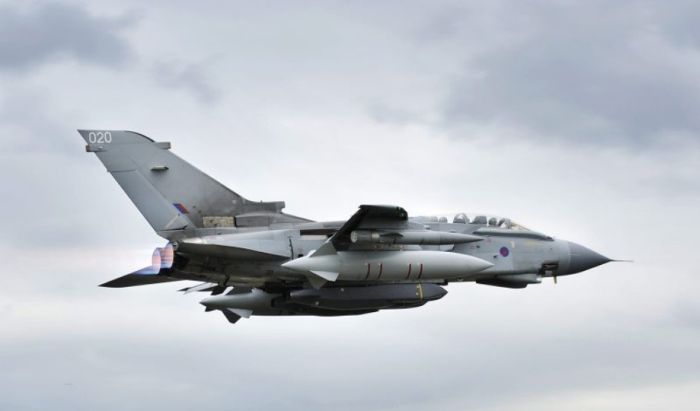|
|
Panavia Tornado Combat Aircraft
|
In 1991, the Tornado made its combat debut in the Gulf War, the British military activities in which were designated Operation Granby. Nearly 60 GR1s were deployed by the United Kingdom to air bases at Muharraq (Bahrain), Tabuk and Dhahran in Saudi Arabia. Several Tornado ADVs were deployed to provide air cover, the threat of their long range missiles being a significant deterrent to Iraqi pilots, who would deliberately avoid combat when approached.
In the early stages of the coalition's military action action, the GR1s targeted military airfields across Iraq, deploying a mixture of 450 kg (1,000 lb) unguided bombs in loft-bombing attacks and specialised JP233 runway denial weapons. Six RAF Tornados were lost in the conflict, as was one Italian Tornado. Of the RAF aircraft, four were lost while delivering unguided bombs, one was lost after delivering JP233, and one trying to deliver laser-guided bombs. On 17 January 1991, the first Tornado to be lost was shot down by an Iraqi SA-16 missile following a failed low-level bombing run. On 19 January, another RAF Tornado was shot down during an intensive raid on Tallil Air Base. The impact of the Tornado strikes upon Iraqi air fields is difficult to determine.
In an emergency deployment, the UK sent out a detachment of Blackburn Buccaneer aircraft equipped with the Pave Spike laser designator, allowing Tornado GR1s to drop precision guided weapons. A further crash programme in support of the sudden military action saw multiple GR1s outfitted with the TIALD laser designation system; author Claus-Christian Szejnmann declared that the TIALD pod enabled the GR1 to "achieve probably the most accurate bombing in the RAF's history". Although laser designation proved effective in the Gulf War, only 23 TIALD pods were purchased by 2000; shortages negatively impacted combat operations over Kosovo.
Following the initial phase of the war, the GR1s switched to medium level strike missions, typical targets for these strikes included munition depots and oil refining facilities. Only the reconnaissance Tornado GR1As continued to operate at the low-altitude high-speed profile throughout the war, the GR1A emerged unscathed despite the inherent danger posed by missions such as conducting pre-attack reconnaissance. In the war's aftermath, Britain maintained a military presence in the Gulf for many years, around half a dozen GR1s were based at Ali Al Salem airbase in Kuwait for operations over the southern no fly zone as part of Operation Southern Watch; another half a dozen GR1s participated in missions over Northern Iraq in Operation Provide Comfort.
|
|









